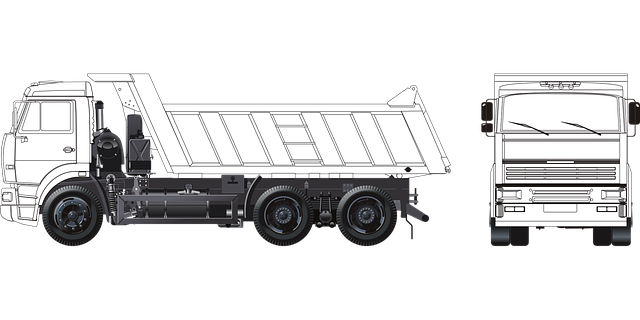Looking to register your car in California? This comprehensive guide breaks down the process step-by-step, from understanding key requirements to choosing between online or in-person registration. We’ll walk you through gathering essential documents, determining vehicle value and tax, and using a VIN verifier to ensure accuracy. By following these clear instructions, you’ll be on your way to a seamless California car registration experience.
- Understand California Car Registration Requirements
- Gather Necessary Documents for Vehicle Registration
- Determine Your Vehicle's Value and Tax
- Choose a Registration Method: Online or In-Person
- Verify VIN and Complete the Registration Process
Understand California Car Registration Requirements

Before diving into the registration process, it’s crucial to understand California’s car registration requirements. These rules are designed to ensure road safety and maintain accurate vehicle records. One key component is the verification of your vehicle’s unique identifier, known as the Vehicle Identification Number (VIN). In California, this VIN verifier plays a critical role in the registration procedure.
Using a mobile VIN verifier or undergoing a vin inspection is often necessary for verifying ownership and ensuring that your vehicle meets all safety standards. This step is essential regardless of whether you’re registering a new car or transferring ownership from one individual to another. It helps prevent fraud and ensures that only legitimate vehicles are on the road, enhancing overall public safety.
Gather Necessary Documents for Vehicle Registration

Before you begin the registration process, ensure you have all the required documents for a smooth transaction. The California Department of Motor Vehicles (DMV) requires several key pieces of information to verify ownership and identify your vehicle. One crucial document is the Vehicle Identification Number (VIN), which serves as a unique code for your car. Utilize a mobile VIN verifier or conduct a standard VIN inspection to retrieve essential details about the vehicle’s history, ensuring accuracy during registration.
Additionally, gather important papers like the title, registration certificate, proof of insurance, and current emissions test results. It’s beneficial to check with the DMV beforehand to confirm any additional documents needed for your specific scenario, whether it’s a new purchase or transferring ownership.
Determine Your Vehicle's Value and Tax

To register your car in California, it’s important to first determine your vehicle’s value and tax. Start by obtaining a Vehicle Identification Number (VIN) report through a reliable vin verifier. This will give you an accurate assessment of your car’s make, model, year, and current market value. In California, the Department of Motor Vehicles (DMV) uses this information to calculate the registration fee, which includes various taxes.
A mobile vin inspection or mobile vin verification service can be beneficial if you’re short on time or unable to visit a DMV office. These services provide convenient and accurate VIN checks, ensuring that you have all the necessary data to complete your car’s registration smoothly. Remember to keep your VIN report handy as it will play a crucial role in the registration process.
Choose a Registration Method: Online or In-Person

In California, registering your car can be done through various methods, with two primary options available: online or in-person. Choosing the right approach depends on your preference and convenience. The online registration process is efficient and allows you to complete the task from the comfort of your home using a mobile vin verifier. This digital tool verifies your vehicle’s unique Vehicle Identification Number (VIN), which is crucial for accurate documentation.
Alternatively, visiting a California Department of Motor Vehicles (DMV) office for an in-person registration provides a more traditional experience. While it might take longer, this method ensures immediate access to services and the ability to address any potential issues directly with a DMV representative. Some individuals prefer the personal touch and instant feedback offered during an in-person vin inspection.
Verify VIN and Complete the Registration Process

After verifying your vehicle’s identity using a VIN verifier, the next step is to complete the registration process with the California Department of Motor Vehicles (DMV). This involves gathering essential documents and ensuring all information is accurate. You’ll need the completed application form, proof of ownership, valid identification, and any required fees.
A mobile vin inspection or mobile vin verification service can be beneficial if you prefer a more convenient option. These services allow you to complete the initial checks and paperwork from the comfort of your home or workplace, saving you time and potential trips to the DMV.
Registering your car in California is a straightforward process once you understand the requirements. By gathering essential documents, determining your vehicle’s value, and choosing between online or in-person registration, you can efficiently complete the task. Don’t forget to use a reliable VIN verifier to ensure accuracy throughout. With these steps, you’ll have your California car registration taken care of in no time.
